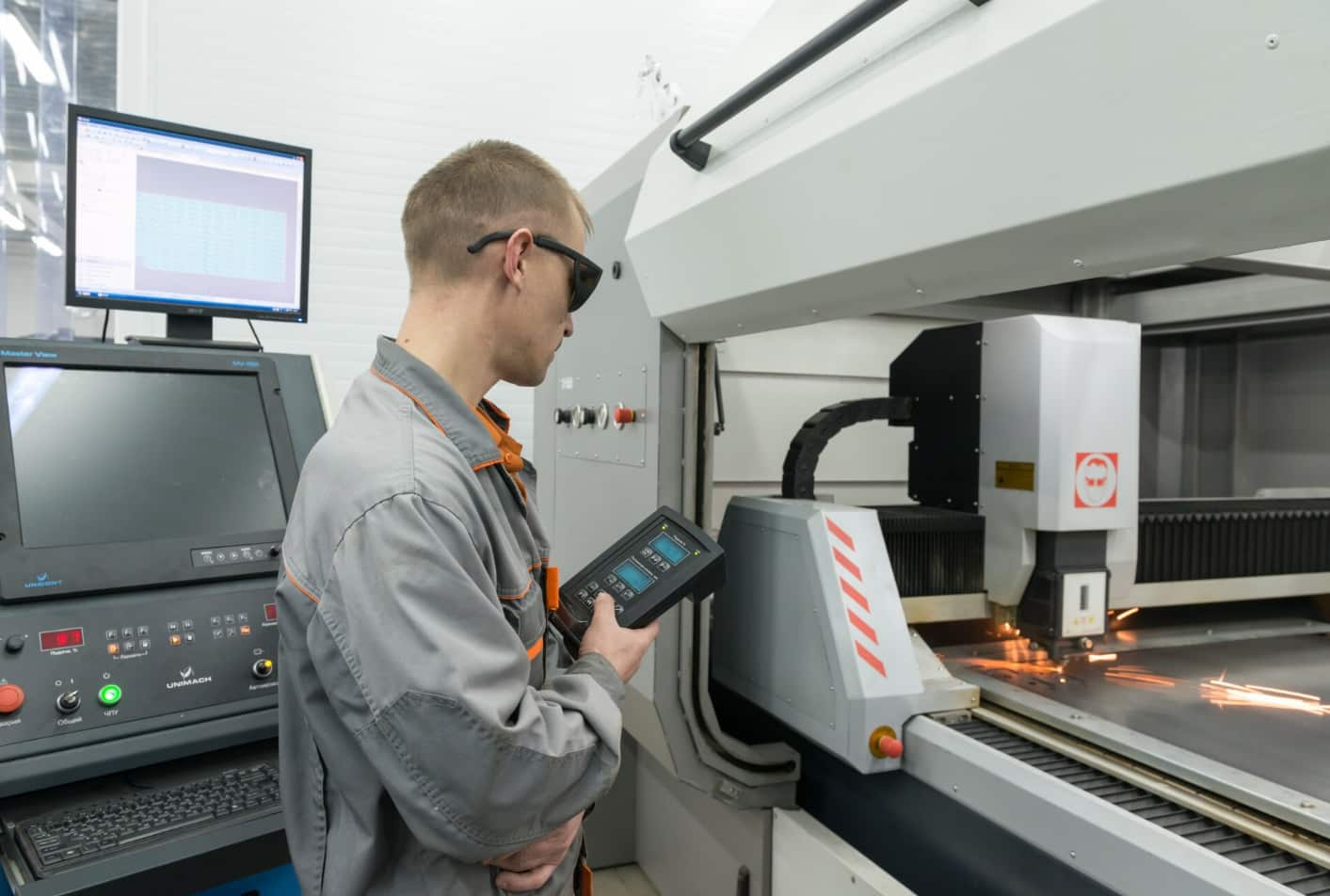CNC machining might sound like complex factory jargon, but it’s one of the most revolutionary technologies shaping modern sports equipment.
CNC stands for Computer Numerical Control, which essentially means using computers to control cutting tools that shape materials with incredible precision.
Think of it as a robot sculptor that can carve metal, plastic, or carbon fiber into exact shapes down to fractions of a millimeter.
The Role of CNC Machining in Sports Tech

In the world of sports, where milliseconds and millimeters can determine victory or defeat, this level of precision isn’t just helpful—it’s game-changing.
Whether you’re a weekend warrior upgrading your gear or a professional athlete seeking that competitive edge, CNC-manufactured equipment is likely already part of your sports arsenal.
Key benefits of CNC machining in sports:
- Unmatched precision: Creates parts with tolerances as tight as ±0.01mm
- Consistent quality: Every piece is identical, eliminating performance variations
- Custom solutions: Enables personalized equipment tailored to individual athletes
- Rapid prototyping: Accelerates innovation cycles for new sports technologies
CNC Machining in Sports Prototyping
Sports brands are constantly pushing boundaries, and CNC machining has become their secret weapon for turning innovative ideas into reality.
Before CNC technology, creating prototypes was time-consuming and expensive, often requiring specialized tooling and weeks of waiting.
Today’s sports engineers can design a new component in the morning and have a physical prototype ready for testing by afternoon.
This speed revolutionizes how quickly brands can validate concepts and iterate designs.
Advantages in prototype development:
- Faster design validation: Test concepts in days instead of weeks
- Superior dimensional accuracy: Prototypes match final specifications exactly
- Reduced development costs: No need for expensive tooling during testing phases
- Material flexibility: Test with actual production materials, not substitutes
- Complex geometries: Create intricate internal structures impossible with traditional methods
The impact extends beyond just speed and cost. CNC prototyping allows engineers to test radical designs that might be too risky or expensive to produce using traditional manufacturing methods.
This has led to breakthrough innovations in aerodynamics, weight reduction, and performance optimization across virtually every sport.
Performance Gear Built for Champions
When it comes to creating championship-level equipment, CNC machining delivers the precision and customization that separate good gear from great gear.
Let’s explore how different sports leverage this technology to give athletes their competitive edge.
Cycling: Engineering Speed
Modern cycling components showcase CNC machining at its finest. Lightweight aluminum and carbon fiber frames require precise tolerances to maintain structural integrity while minimizing weight. CNC-machined derailleur components ensure smooth, reliable shifting under extreme conditions.
- Frame junctions: CNC-cut joints provide perfect alignment for optimal power transfer
- Chainrings and cassettes: Precision tooth profiles maximize efficiency and durability
- Brake calipers: Exact mounting points ensure consistent stopping power
- Custom geometry: Frames tailored to individual rider measurements and preferences
Golf: Precision Meets Performance
Golf equipment manufacturers use CNC machining to create club heads with precise weight distribution and face geometries. Every gram matters in golf club design, and CNC machining allows engineers to place weight exactly where it’s needed for optimal performance.
- Variable face thickness: Creates larger sweet spots and improved ball speed
- Internal weight ports: Precisely positioned tungsten weights for custom ball flight
- Groove specifications: Exact depth and spacing for consistent spin rates
- Putter faces: Milled patterns that enhance feel and roll characteristics
Tennis: Balance and Power
Tennis racket frames benefit from CNC machining’s ability to create complex internal structures. Modern rackets feature varying wall thicknesses and strategic reinforcements that would be impossible to achieve with traditional manufacturing.
- Variable beam construction: Optimizes stiffness and flexibility throughout the frame
- String bed geometry: Precise hole placement affects string tension and ball contact
- Handle customization: Exact grip sizes for improved comfort and control
- Vibration dampening: Internal structures reduce unwanted frame vibrations
CNC vs. Traditional Manufacturing Comparison
| Feature/Benefit | CNC Machining | Traditional Manufacturing |
|---|---|---|
| Precision | ±0.01 mm | ±0.5 mm |
| Customization | High | Low |
| Production Speed | Fast | Moderate |
| Material Variety | Wide Range | Limited |
| Complex Geometries | Excellent | Restricted |
| Setup Costs | Low | High |
| Minimum Order | 1 piece | 100+ pieces |
| Design Changes | Immediate | Weeks/Months |
Innovation Through Advanced Materials
CNC machining’s versatility shines when working with advanced materials that define modern sports equipment. From aerospace-grade titanium to cutting-edge carbon fiber composites, CNC machines can handle materials that traditional manufacturing simply cannot process effectively.
Material advantages in sports applications:
- Titanium alloys: Lightweight yet incredibly strong for high-stress components
- Carbon fiber: Complex layups and precise trimming for optimal fiber orientation
- Advanced polymers: Custom plastic components with specific performance characteristics
- Metal matrix composites: Combining the best properties of multiple materials
This material flexibility enables sports engineers to select the perfect material for each component’s specific requirements, rather than being limited by manufacturing constraints.
The Future of Sports Manufacturing
CNC machining continues evolving with emerging technologies like AI-assisted programming and real-time quality monitoring. These advances promise even greater precision and efficiency in sports equipment manufacturing.
Emerging trends shaping the future:
- 5-axis machining: Creates more complex geometries in a single operation
- Hybrid manufacturing: Combines CNC with 3D printing for optimal results
- Smart tooling: Sensors monitor cutting conditions for consistent quality
- Lights-out production: Automated systems enable 24/7 manufacturing capabilities
Frequently Asked Questions:
- How much does CNC machining add to sports equipment costs?
While CNC machining requires initial investment in programming and setup, the technology often reduces overall costs by eliminating expensive tooling and enabling efficient small-batch production. Premium equipment may cost 10-20% more, but the performance benefits typically justify the investment.
- Can CNC machining create completely custom sports equipment?
Absolutely. CNC machining excels at one-off custom pieces and small production runs. Many high-end manufacturers offer custom-fitting services that utilize CNC machining to create equipment tailored to individual athletes’ specifications and preferences.
- What sports benefit most from CNC-manufactured equipment?
Precision sports like golf, cycling, and motorsports see the greatest benefits, but virtually every sport utilizes CNC-manufactured components. Even team sports benefit from CNC-machined protective equipment, cleats, and training aids.
- How long does it take to CNC machine a sports component?
Simple components can be completed in minutes, while complex parts might require several hours. However, the total time from design to finished part is typically much faster than traditional manufacturing methods, often measured in days rather than weeks.
Conclusion:
CNC machining has fundamentally transformed sports technology, enabling innovations that seemed impossible just decades ago.
The technology’s impact extends far beyond simple precision—it has democratized customization, accelerated innovation cycles, and enabled the creation of equipment that truly enhances athletic performance.
Key takeaways:
- Precision matters: CNC’s accuracy translates directly to improved performance
- Customization is king: Personalized equipment provides competitive advantages
- Speed enables innovation: Rapid prototyping accelerates technological breakthroughs
- Material flexibility: Advanced materials create new possibilities for equipment design
- Future potential: Emerging technologies promise even greater capabilities
Whether you’re a professional athlete seeking every possible advantage or an enthusiast wanting the best possible gear, CNC-manufactured sports equipment represents the cutting edge of performance technology.

![How to Read a Spread for Betting [Updated Guide]](https://thetopplayers.com/wp-content/uploads/2022/12/Without-logo-41-30.jpg)
![How to Score Bracket Points [Updated Guide]](https://thetopplayers.com/wp-content/uploads/2022/12/Without-logo-41-33.jpg)
